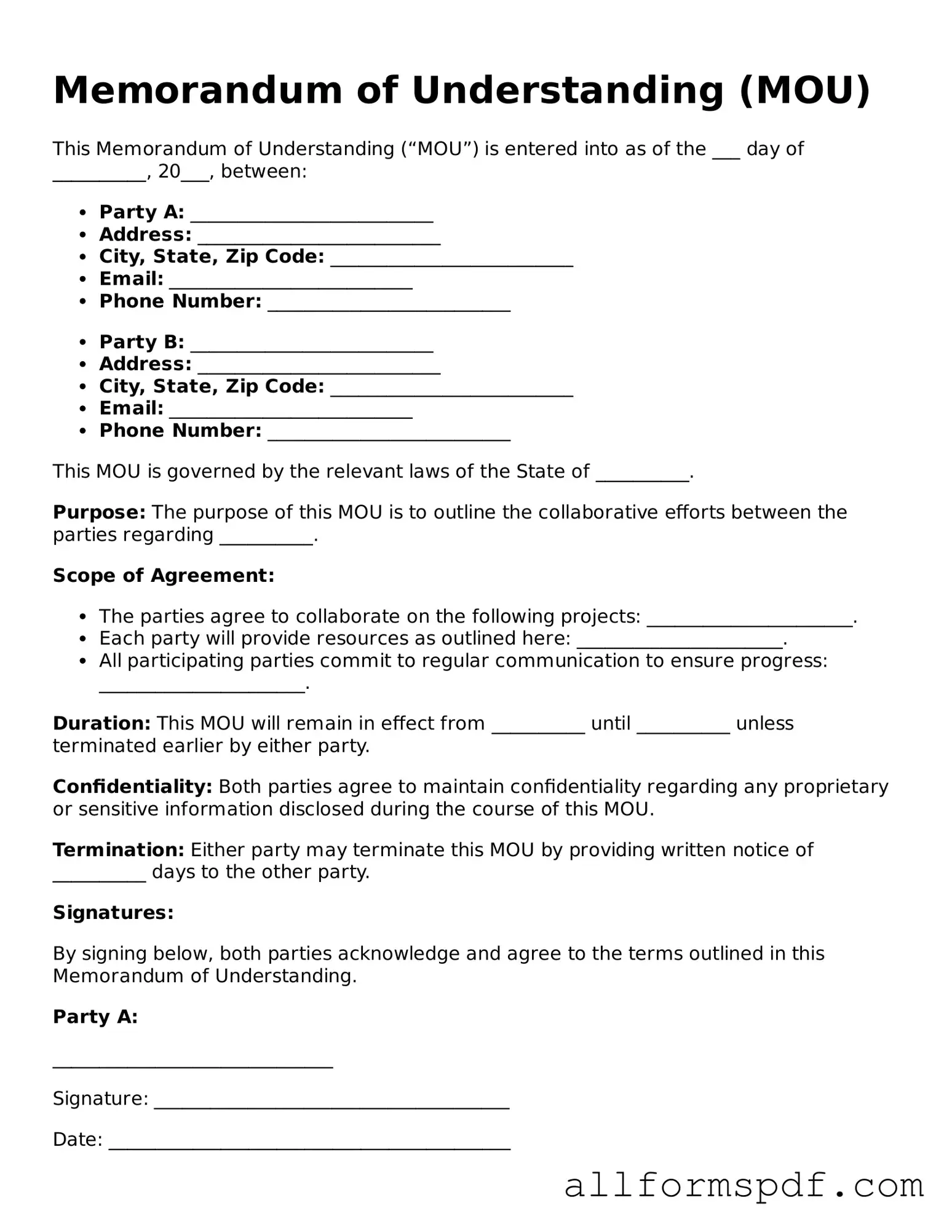Filling out a Memorandum of Understanding (MOU) can be a straightforward task, yet many individuals make common mistakes that can lead to confusion or legal complications. One significant error is failing to clearly define the purpose of the MOU. Without a well-articulated purpose, the intentions of the parties involved may become ambiguous, leading to misunderstandings down the line.
Another frequent mistake involves neglecting to specify the roles and responsibilities of each party. Each participant should have a clear understanding of what is expected of them. If these roles are not outlined, it can result in miscommunication and unmet expectations.
Additionally, people often overlook the importance of including timelines and deadlines. Without these details, parties may not know when specific actions should occur. This lack of structure can lead to delays and frustration, undermining the effectiveness of the agreement.
Furthermore, failing to address dispute resolution methods is a common oversight. It is essential to have a plan in place for resolving conflicts should they arise. Without a clear process, disagreements can escalate, causing significant strain on the relationship between the parties.
Another mistake is not reviewing the document thoroughly before signing. Rushing through the process can lead to errors or omissions that may have serious implications. Each party should take the time to read and understand the MOU fully, ensuring that it reflects their intentions accurately.
People also frequently forget to include provisions for amendments or changes to the MOU. Life circumstances can change, and having a clear process for modifying the agreement can help maintain a positive relationship between the parties. Without this provision, making necessary adjustments can become complicated and contentious.
Lastly, individuals often neglect to seek legal advice when necessary. While an MOU may seem simple, the implications can be complex. Consulting with a legal professional can provide valuable insights and help avoid potential pitfalls. Taking this step can save time, resources, and relationships in the long run.
